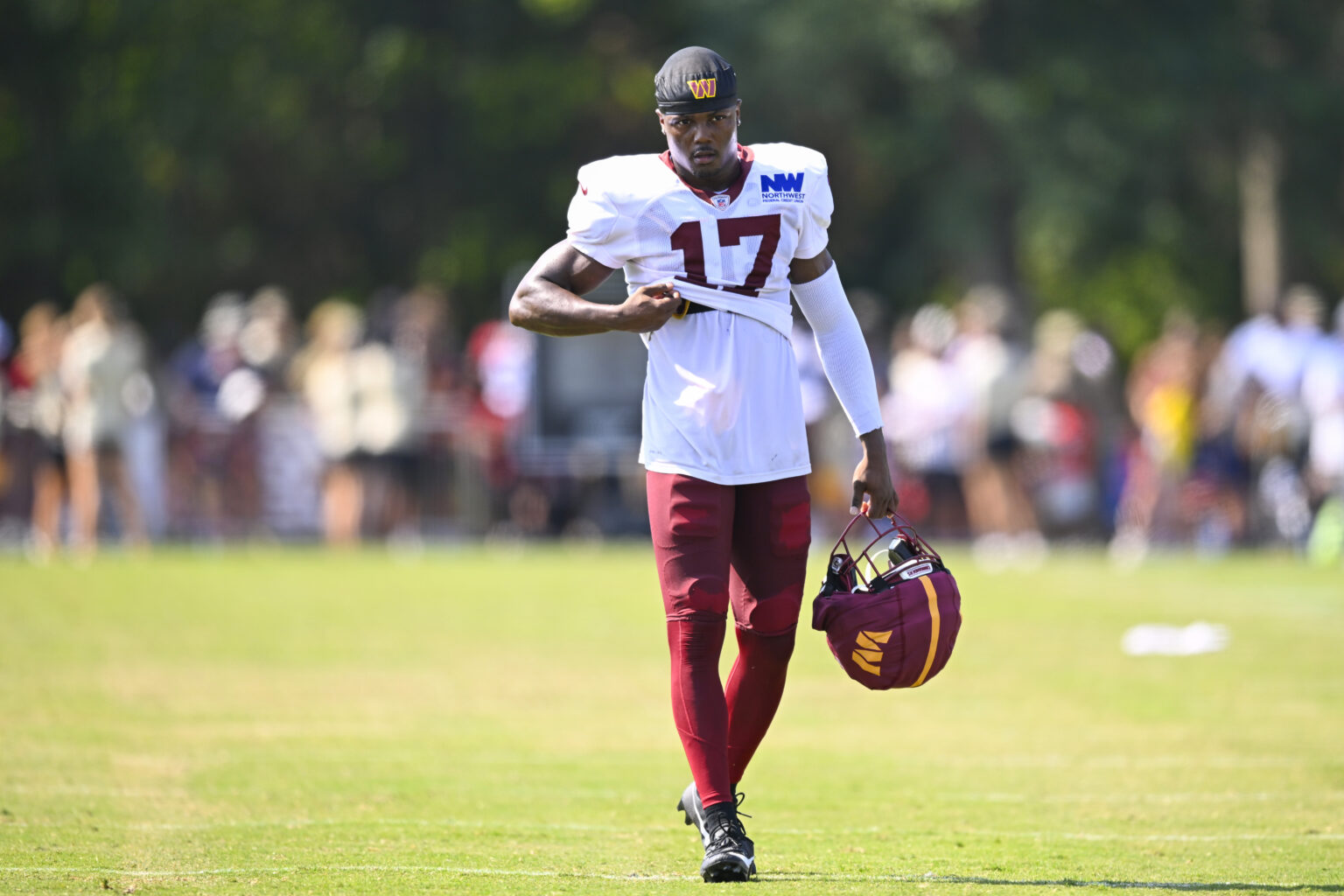Revisiting Contract Negotiations: The Ongoing Saga of Terry McLaurin and the Washington Commanders
As the NFL landscape continues to evolve, echoes of past contract disputes resurface, notably involving Washington Commanders star wide receiver Terry McLaurin. The parallels between his current situation and his 2022 negotiations highlight the persistent challenges players face when seeking financial security amid team dynamics and league policies.
Historical Context: McLaurin’s 2022 Contract Standoff
In 2022, McLaurin’s offseason was marked by strategic absences. Opting out of voluntary organized team activities (OTAs), he aimed to leverage his position as a pending free agent, all while navigating the complexities of a contract extension. His decision to skip mandatory minicamp, which could have resulted in fines approaching $105,000, underscored the tension between player ambitions and team negotiations. Despite the setbacks, he ultimately secured a three-year, nearly $70 million deal just before training camp, reaffirming his value to the franchise.
Current Negotiation Climate: A Repeat of Past Patterns
Fast forward three years, and McLaurin’s stance remains largely unchanged. With a year remaining on his existing contract, he’s again seeking a lucrative extension. His participation in early offseason workouts has been partial, and he’s contemplating skipping the upcoming minicamp scheduled from Tuesday to Thursday. Missing all three days would incur fines close to $105,000, as per NFL collective bargaining agreement stipulations. These absences serve as a clear message: McLaurin is dissatisfied with the pace of negotiations and the perceived lack of progress.
Team Perspective and Player Development
From the Commanders’ viewpoint, retaining McLaurin long-term is a priority. General Manager Adam Peters expressed in March that the team’s goal is to keep him in Washington for years to come. His growth as both a player and a leader has been evident, especially during a season where he demonstrated remarkable consistency and leadership qualities. His development has been a bright spot amid franchise controversies and off-field investigations, solidifying his importance to the team’s future.
Achievements and Impact on the Field
Since entering the league as a third-round pick in 2019, McLaurin has established himself as one of the NFL’s premier wide receivers. He has led the Commanders in receiving yards every season and is the first in franchise history to surpass 1,000 yards in five consecutive campaigns. Remarkably, he has achieved this feat while working with 11 different starting quarterbacks, showcasing his adaptability and resilience.
In recent seasons, McLaurin’s role has expanded beyond mere production. Last year, with quarterback Jayden Daniels, he became the primary target, catching nearly half of Daniels’s 25 passing touchdowns, including a game-winning score in Cincinnati with only a 10.3% probability of success, according to Next Gen Stats. His 13 touchdowns ranked second among NFL wide receivers, and his targeted passer rating of 135.3 was among the league’s best, per Pro Football Focus.
Contract Outlook: The Path to a Third NFL Deal
Securing a third contract with a single team is increasingly rare in today’s NFL, but McLaurin appears poised to join this exclusive group-assuming negotiations proceed smoothly. His recent three-year extension in 2022 was a strategic move, allowing him to maximize his earning potential before reaching the age where many receivers experience decline.
Industry experts suggest that McLaurin’s next deal will likely mirror recent high-value contracts. For instance, DK Metcalf’s four-year, $132 million contract with the Steelers, which includes $60 million guaranteed, sets a benchmark. While total contract values can be inflated by signing bonuses and structure, the guaranteed money and annual salary are often more indicative of a player’s market value.
Negotiation Dynamics: Age, Performance, and Market Comparisons
McLaurin, who will turn 30 shortly after the 2025 season begins, faces the typical challenges associated with aging receivers. Historically, only a handful of players in their 30s have surpassed 1,000 yards in a season-Adams and Evans last year being notable exceptions. The NFL’s trend indicates a decline in productivity and durability for receivers past 30, which could influence contract negotiations and team strategies.
Comparing McLaurin to Metcalf, both have similar career stats-each has played 97 games and been targeted over 700 times. However, McLaurin’s age advantage for negotiations might be offset by the team’s considerations of future performance decline. Structuring a deal that balances guaranteed money with incentives and roster bonuses could be key, especially given the league’s tendency to limit fully guaranteed contracts for older players.
Financial Strategy and Cap Management
The Commanders currently enjoy significant salary cap flexibility, with most players on short-term deals. This financial leeway allows them to craft a lucrative extension for McLaurin without immediate cap constraints. However, a sizable contract could impact future negotiations, particularly if the team considers re-signing emerging talents like Deebo Samuel or managing other positional needs.
Strategic Priorities: The Quarterback Connection
Ultimately, McLaurin’s value is intertwined with the development of Washington’s quarterback situation. If the team hits on a franchise quarterback-similar to the recent success seen with young signal-callers-McLaurin’s role as a primary target becomes even more critical. As industry analysts suggest, investing in a proven receiver like McLaurin, even at a premium, could be justified to maximize the return on the team’s quarterback investment.
In conclusion, McLaurin’s ongoing contract negotiations reflect broader league trends-balancing age, performance, and financial guarantees. With a strong recent season and a strategic approach, he remains a prime candidate for a significant deal, provided both sides can navigate the complexities of NFL contract structures and market dynamics.

